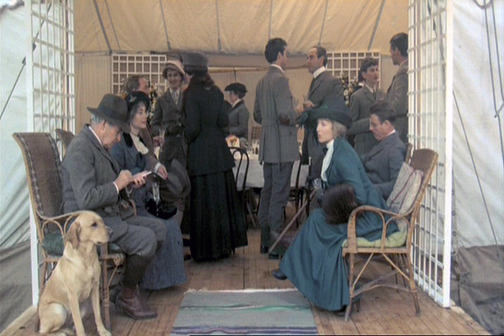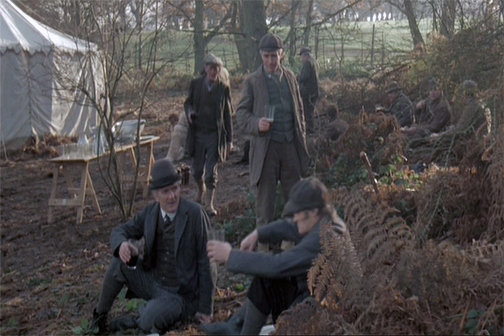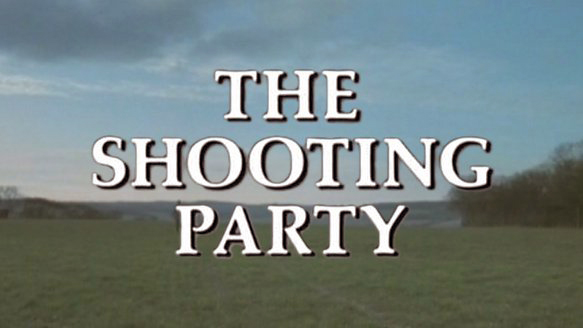Colgate’s The Shooting Party is a snapshot of English gentry circa October 1913 when Sir Randolph and Minnie Nettleby, the lord and lady of the manor, host one of their traditional fall shooting parties. A halt accompanies it on the hunt or midday break for luncheon.

Sir Randolph (beside the yellow Lab) and guests wait to be called to luncheon. Alan Bridges. The Shooting Party (1985)
Once the hunting is resumed, the situation alters drastically when a local man is shot and killed by a careless guest. This is passed off as an accident, but it casts a pall over Sir Randolph, and when another hunt is organized for November, “No one enjoyed it as much as usual; even for those who had not been there when it happened, the shadow of the accident fell over the day. . . By the time the next season came round, a bigger shooting party had begun in Flanders.”
According to Colgate, Sir Randolph is traditional and punctilious. Because it’s a damp October, the luncheon is served in the boathouse, which is cleaned and warmed. In the center of the room, the staff sets a long refractory table surrounded by Windsor chairs (with damp cushions). The setting reminds a guest of the three bears, but the joke falls flat. The Nettleby’s menu includes very suitably prepared chicken mayonnaise, Lobster Vol-au-Vents (diced or creamy lobster in a pastry puff), boiled potatoes, lemonade, wine, and iced champagne.

Alan Bridges. The Shooting Party (1985)
Outside the boathouse, the local men hired to chase the game are provided with lunch but sit outdoors on the turf eating rabbit stew, baked potatoes, bread, and drinking beer.
Featured Image: Alan Bridges’ adaptation of the luncheon takes place in a pavilion where the gentry are served as if in a dining room.
See Isabel Colgate. The Shooting Party. Berkeley, California: Counterpoint, 1980; Alan Bridges. The Shooting Party (1985). The screenplay by Julian Bond is based on Isabel Colgate’s novel. Edenflow Ltd.

